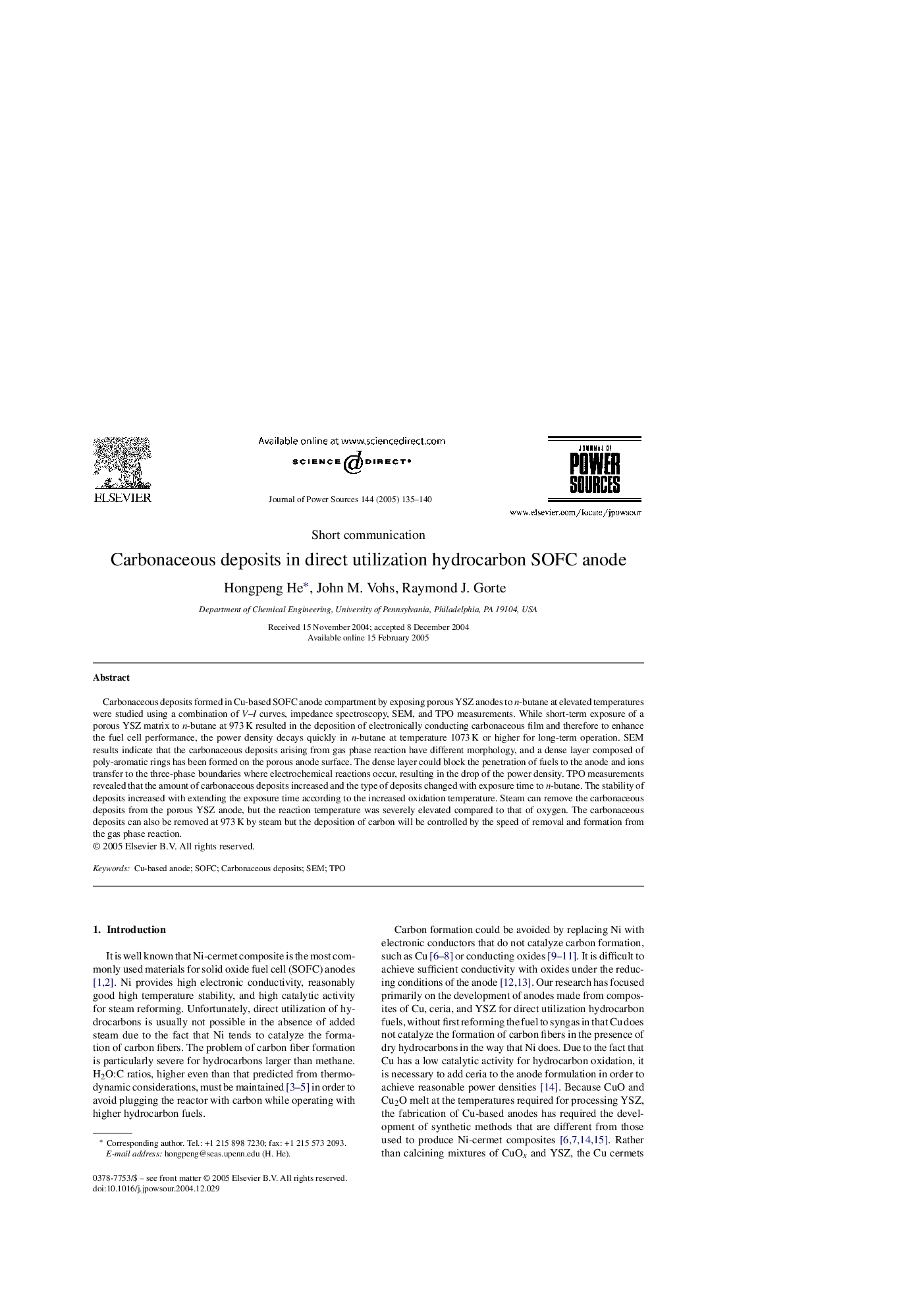| کد مقاله | کد نشریه | سال انتشار | مقاله انگلیسی | نسخه تمام متن |
|---|---|---|---|---|
| 10567371 | 973252 | 2005 | 6 صفحه PDF | دانلود رایگان |
عنوان انگلیسی مقاله ISI
Carbonaceous deposits in direct utilization hydrocarbon SOFC anode
دانلود مقاله + سفارش ترجمه
دانلود مقاله ISI انگلیسی
رایگان برای ایرانیان
کلمات کلیدی
موضوعات مرتبط
مهندسی و علوم پایه
شیمی
الکتروشیمی
پیش نمایش صفحه اول مقاله

چکیده انگلیسی
Carbonaceous deposits formed in Cu-based SOFC anode compartment by exposing porous YSZ anodes to n-butane at elevated temperatures were studied using a combination of V-I curves, impedance spectroscopy, SEM, and TPO measurements. While short-term exposure of a porous YSZ matrix to n-butane at 973Â K resulted in the deposition of electronically conducting carbonaceous film and therefore to enhance the fuel cell performance, the power density decays quickly in n-butane at temperature 1073Â K or higher for long-term operation. SEM results indicate that the carbonaceous deposits arising from gas phase reaction have different morphology, and a dense layer composed of poly-aromatic rings has been formed on the porous anode surface. The dense layer could block the penetration of fuels to the anode and ions transfer to the three-phase boundaries where electrochemical reactions occur, resulting in the drop of the power density. TPO measurements revealed that the amount of carbonaceous deposits increased and the type of deposits changed with exposure time to n-butane. The stability of deposits increased with extending the exposure time according to the increased oxidation temperature. Steam can remove the carbonaceous deposits from the porous YSZ anode, but the reaction temperature was severely elevated compared to that of oxygen. The carbonaceous deposits can also be removed at 973Â K by steam but the deposition of carbon will be controlled by the speed of removal and formation from the gas phase reaction.
ناشر
Database: Elsevier - ScienceDirect (ساینس دایرکت)
Journal: Journal of Power Sources - Volume 144, Issue 1, 1 June 2005, Pages 135-140
Journal: Journal of Power Sources - Volume 144, Issue 1, 1 June 2005, Pages 135-140
نویسندگان
Hongpeng He, John M. Vohs, Raymond J. Gorte,